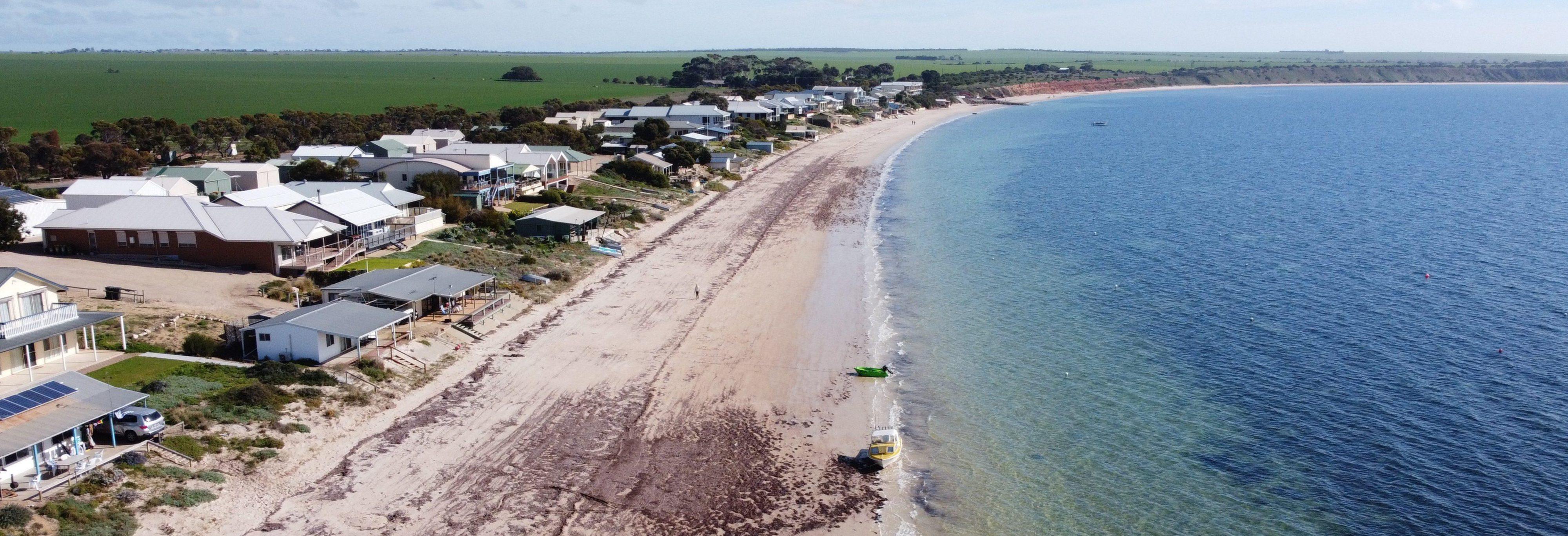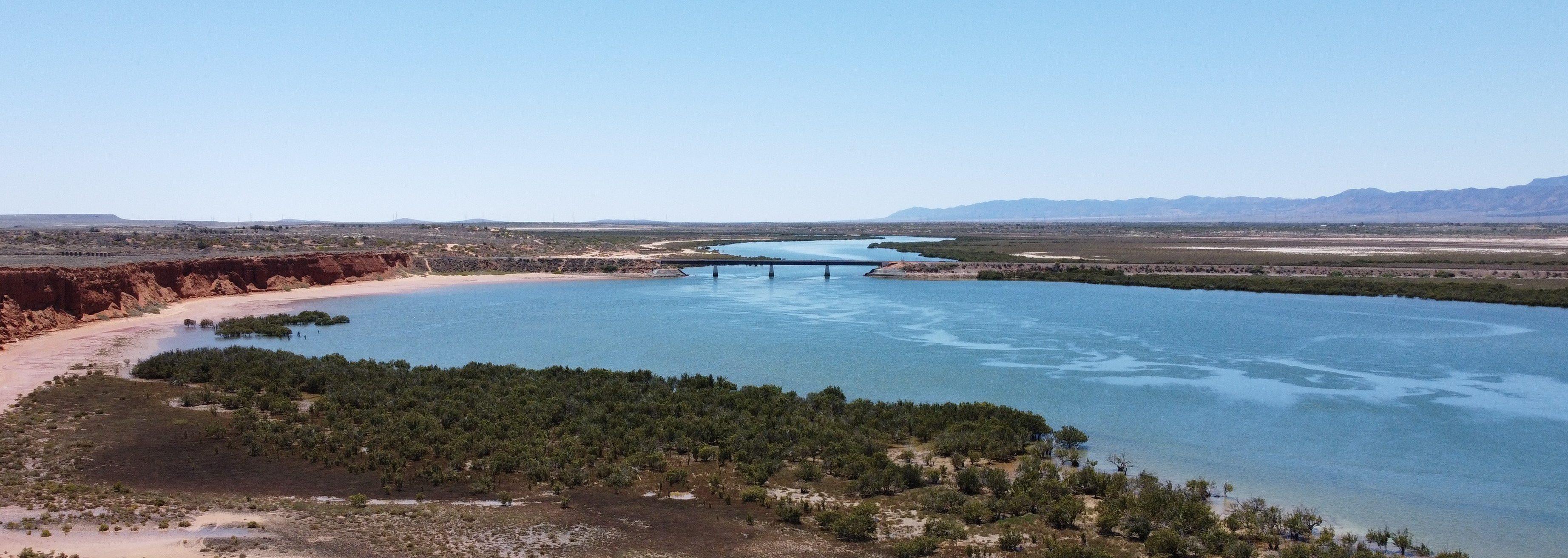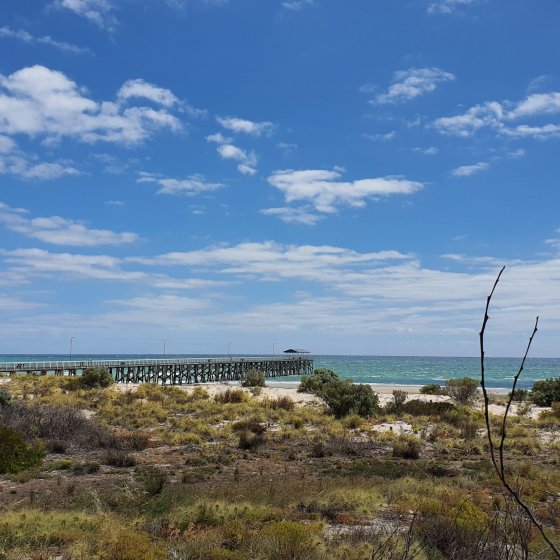- Home
- Environmental Themes
- Sea
- Pressures and Responses
- Climate Change
Climate Change
Coastal Erosion and Inundation

Pressures
- Sea level rising above the current high tide levels.
- Severe wave action, wind, rain, tides and storm surges.
Impacts
- Increased risk of sand dunes and beach erosion from inundation of sea water.
- Impacts or reduction in area of intertidal zones including reefs, mangroves and saltmarshes impacting species habitat and aquatic plants and animals that live within intertidal zones.
- Impacts to coastal development and infrastructure that may become more susceptible to storm surges and flooding.
Responses
- The Local Government Association has supported the development of the Local Government Coastal Adaption Guidelines to provide support to South Australian councils in assessing and quantifying the likely impacts to coastal councils from coastal inundation and erosion as a result of climate change. The association will be working with a number of government agencies and stakeholders to deliver an SA Climate Ready Coasts program. This program will aim to facilitate consistent approaches to coastal adaptation across South Australia and improve our knowledge and capacity to address adaptation for coastal planning. The Program Plan was issued in March 2023.
- Work will be undertaken by state government to assess risks to key coastal assets, human settlements and coastal environments under a changing climate and to facilitate long-term coastal adaptation planning for South Australia.
- The Coast Protection Board Policy includes provisions to address impacts from potential flooding and sea-level rise.
- A Coastal Flooding Mapping Viewer has been developed to help identify areas on the Eyre Peninsula and Limestone Coast that may be vulnerable to coastal flooding from storm surges and/or sea-level rise.
- Seawalls are being constructed in some locations (for example, Point Turton) to prevent sea water from encroaching upon housing and other buildings, and to protect and stabilise sand.
- Dunes are being revegetated to improve stability. This has been done at Semaphore South where dunes were damaged during a 2016 storm and also at West Beach.
Opportunities
- Expand engagement with Aboriginal peoples to inform appropriate revegetation methods, including plant types and location of plantings.
- An independent paper on Coastal protection commissioned as part of the 2018 SA State of the Environment Report recommended that local-scale risk assessment and response planning needed to be done to effectively respond to sea-level rise. This was based on the fact that local topography (for example, low-lying areas), vulnerable coastal features (for example, popular beaches and erosion-prone coastal land) and economically important built assets (for example, strategic infrastructure) needed to be assessed in a more site-specific way, as opposed to the regional or state scale. This is an opportunity for local councils and the South Australian planning system to prepare for future impacts.
Temperature, Salinity and Acidity

Pressures
- Increasing ocean temperatures. Water is a main heat sink that absorbs 90% of air temperatures.
- Sea water acidification resulting from oceanic absorption of atmospheric carbon dioxide produced by human activities.
- Rise in salinity caused by increases in evaporation. This is of particular risk to our estuaries, coastal wetlands and the top of both gulfs. Less rainfall also results in less fresh water entering the marine environment from natural waterways.
Impacts
- Changes in temperature, salinity and acidity will impact marine ecosystem health and biodiversity, and sometimes results in fish kills.
- Increases in water temperature will result in a decrease in oxygen levels as warmer waters hold less oxygen.
- Increases in acidity will impact marine organisms such as coral, some plankton and those with shells and exoskeletons as it decreases these species capacity to grow their shells. This may also affect commercial and recreational fisheries, and aquaculture, particularly for shellfish species such as abalone, South Rock Lobster and Pacific Oysters.
- Changes in sea salinity can have significant consequences for marine ecosystems. Some organisms are highly adapted to specific salinity levels, and alterations in salinity can disrupt their habitats and affect their survival.
- Changes in temperature, salinity and acidity are likely to affect our commercial and recreational fisheries and aquaculture industries.
- Marine species may be displaced by moving away from regions due to the increase in water temperature, particularly those species living in intertidal and shallow environments.
- Changes to the marine environment may also increase the risk of harmful algal blooms and fish kills, and prevalence of marine invasive species.
Responses
- Research is being supported by the Australian Fisheries Management Authority, Commonwealth Scientific and Industrial Research Organisation (CSIRO) and Fisheries Research and Development Corporation that investigates impacts of climate change on fisheries and aquaculture.
- The CSIRO has produced a Climate Adaptation Handbook that provides the fishing sector with a tool to explore adaptation options for their fishery that would be the most feasible and effective, and includes a fact sheet on observed and future ocean changes and projected impacts on fish species in southern Australia.
- PIRSA will be working with industry to investigate and support industry development in new aquaculture opportunities, such as new climate resilient species and commercial-scale seaweed for feed supplements to reduce livestock methane emissions.
- The Marine Parks Status Report for 2012–17 highlights key evaluation questions, one of which is ‘To what extent have marine parks strategies contributed to enabling marine environments to adapt to impacts of climate change?’ This question will be addressed in the next evaluation report.
- The CSIRO are developing AquaWatch Australia that will deliver a ‘weather service for water quality‘ to provide an early warning system that will help manage harmful algal blooms. A trial of this system has been undertaken in Spencer Gulf.
- PIRSA responds to fish kills and aquaculture mortalities with the primary aim of ruling out infectious and notifiable diseases, which may require an emergency response.
Opportunities
- Identification of management strategies to increase resilience of our fisheries and aquaculture industry that are susceptible to increases in water temperatures.
- Management plans and marine protected areas to take into consideration species shifts that may result from increasing sea water temperatures.
- Development of flexible and adaptable aquaculture zone policies that provide alternative suitable species for farming that reflect changing climatic conditions.
Further reading
- Climate change impacts on coastal fisheries and aquaculture – provides information on climate change impacts on Australian fisheries and aquaculture industrie
- BOM National State of the Climate 2022 – Oceans
- Blue Carbon Strategy for South Australia – establishes a statewide program of projects and research relating to blue carbon ecosystem protection and restoration, which identifies specific actions for state government
- SA Climate Ready Coasts Program – aims to improve the approach for coastal management and accelerate coastal adaptation planning in South Australia
- FRDC Climate Change and Sustainability – work supported by FRDC on blue carbon, climate change, energy efficiency and renewables and Marine Parks Australia to support the sustainable development of fisheries and aquaculture and its response to climate change
